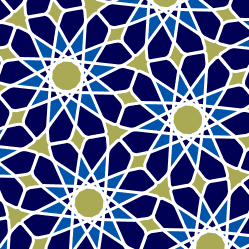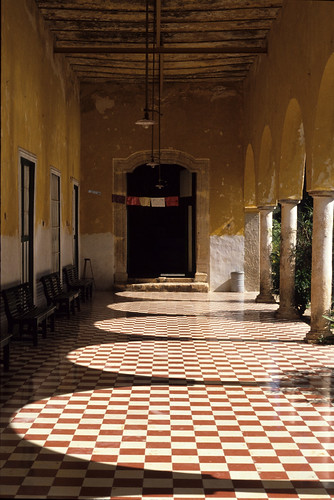
In class we spoke of the ways in which an artist can find a solution to a "mathematical" problem in a piece of art by using calculation or through trial and error - an often correct and faster method. I spent my fall semester in Barcelona, Spain last year living down the street from Gaudi's
La Sagrada Familia. We spoke of him in all of my courses, with particular emphasis on his precision of detail and innovative architectural techniques. I guess I had just assumed he was a mathematician of sorts to make such brave choices in his designs, but as it turns out, he used little math. This discovery fascinates me. I have copied a bit about one of his techniques below:
"Gaudí spent ten years working on studies for the design, and developing a new method of structural calculation based on a stereostatic model built with cords and small sacks of pellets. The outline of the church was traced on a wooden board (1:10 scale), which was then placed on the ceiling of a small house next to the work site. Cords were hung from the points where columns were to be placed. Small sacks filled with pellets, weighing one ten-thousandth part of the weight the arches would have to support, were hung from each catenaric arch formed by the cords. Photographs were taken of the resulting model from various angles, and the exact shape of the church's structure was obtained by turning them upside-down obtaining therefore the form, absolutely precise and exact, of the structure of the building, without having to have conducted an operation of calculation and without possibility of error. The forms of cords corresponded to the lines of tension of the prim structure and when inverting the photo, the lines of pressure of the compressed structure were obtained. An absolutely exact and simple method, giving an example of the intuitive and elementary methods that Gaudí applied in its architecture and that allowed him to obtain balanced forms very similar to which nature offers."
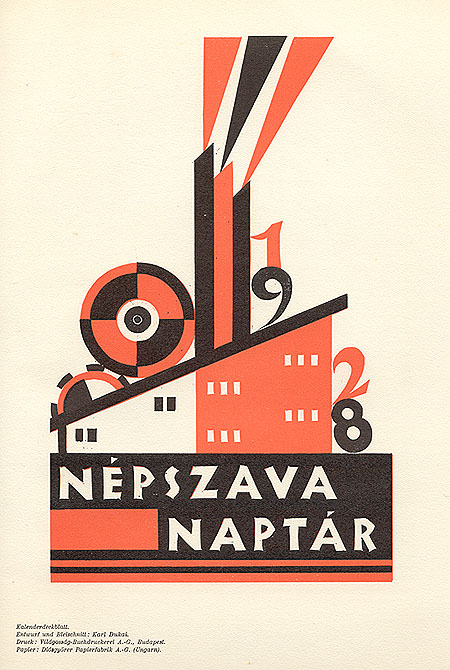
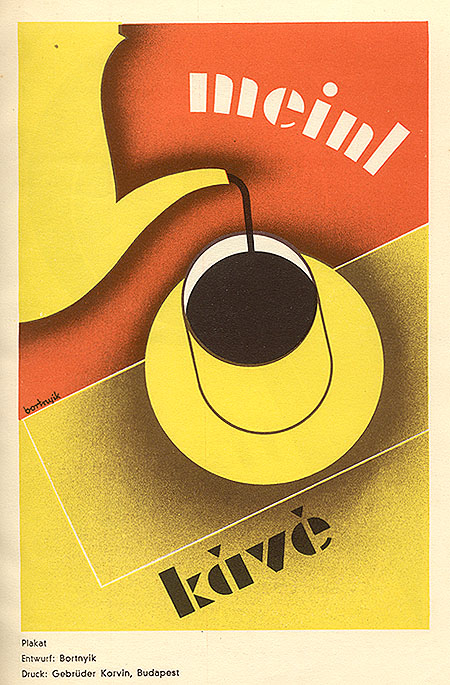




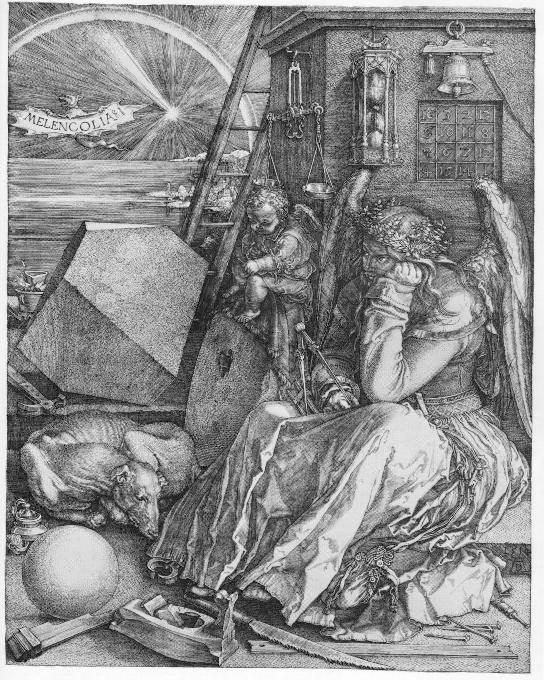


 When I visited Paris this past semester, I went inside Notre Dame and right away noticed the most beautiful stained glass rosette pattern on its wall. The colors coming through from the sunlight illuminated it so magically. This was the photography that I had taken myself. It was so amazing.
When I visited Paris this past semester, I went inside Notre Dame and right away noticed the most beautiful stained glass rosette pattern on its wall. The colors coming through from the sunlight illuminated it so magically. This was the photography that I had taken myself. It was so amazing. Stonehenge is a great early example of the math involved in design. The monument in Wiltshire, England shows how mathematics was used in the design process long ago. The creators of Stonehenge needed to not only use mathematics to determine the exact size and placement for the stones, but the long process of getting the stones to the location. Up to 43 of the 4-ton stones were transported from 250 kilometers away, which must have involved a great deal of mathematics to move across the country, which is believed to have been a series of logs to which the stones were rolled across. It is a standing monument to the use of mathematics involved in design.
Stonehenge is a great early example of the math involved in design. The monument in Wiltshire, England shows how mathematics was used in the design process long ago. The creators of Stonehenge needed to not only use mathematics to determine the exact size and placement for the stones, but the long process of getting the stones to the location. Up to 43 of the 4-ton stones were transported from 250 kilometers away, which must have involved a great deal of mathematics to move across the country, which is believed to have been a series of logs to which the stones were rolled across. It is a standing monument to the use of mathematics involved in design.

 This is the Chand Baori Well in India. It was built in the 10th century as a practical solution to the water problem in the area. It is 30 meters deep, it has 13 floors and 3,500 steps. And legends say that ghosts build it in one night and that it has so many steps to make it impossible for someone to retrieve a coin once it’s been dropped in the well.
This is the Chand Baori Well in India. It was built in the 10th century as a practical solution to the water problem in the area. It is 30 meters deep, it has 13 floors and 3,500 steps. And legends say that ghosts build it in one night and that it has so many steps to make it impossible for someone to retrieve a coin once it’s been dropped in the well.
 When reading the Introduction to Symmetry article today, I tried the Symmetric Figure Exploration and I really enjoyed making the wallpapers. One example I made is to the left. If you need some interactive visuals, this a great exercise.
When reading the Introduction to Symmetry article today, I tried the Symmetric Figure Exploration and I really enjoyed making the wallpapers. One example I made is to the left. If you need some interactive visuals, this a great exercise.
 When I'm bored, I use a site called Stumble Upon.com that gives me a list of interests and then it shuffles websites based on my interests. This came up the other day and I was really interested in its formation of shapes but simply looking at it almost as if it was a flat image. Just being created by wire supports for this tower and light structure, I like its probably accidental making of a cool image.
When I'm bored, I use a site called Stumble Upon.com that gives me a list of interests and then it shuffles websites based on my interests. This came up the other day and I was really interested in its formation of shapes but simply looking at it almost as if it was a flat image. Just being created by wire supports for this tower and light structure, I like its probably accidental making of a cool image.



